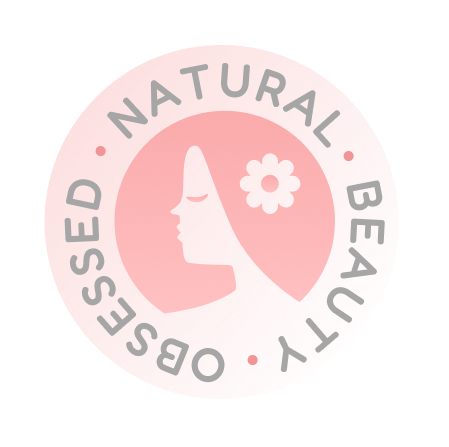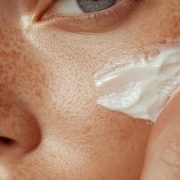Which of These Ingredients Actually Absorb and Work—According to Science
Posted on July 21, 2025 Written by: 100% PURE®

Skincare has come a long way from one-size-fits-all creams. These days, it’s all about ingredients—people want to know exactly what’s in their products and how those ingredients actually work. That’s where science steps in, helping us understand what really gets absorbed into the skin and makes a difference.
Peptide serums, niacinamide, and azelaic acid have quickly become the stars of the skincare world. Why? Because they deliver real, visible results—from smoothing fine lines to calming redness and fading dark spots. It’s no surprise they’re at the center of today’s skincare conversations.
Understanding Ingredient Absorption
When you apply a skincare product, not everything on your face actually goes into your skin. For an ingredient to truly make a difference, it needs to be absorbed—meaning it penetrates beyond the surface and reaches deeper where it can trigger real, lasting change.
Here’s what affects that journey:
Molecular Size: Smaller molecules (like niacinamide) slip into the skin more easily. Larger ones may need delivery systems—like liposomes or encapsulation—to reach their target.
Delivery Systems: These act like “carriers,” helping actives travel deeper and stay stable until they reach the right layer of skin.
pH Balance: Your skin has a natural pH. If a product’s pH is off, it can block absorption or cause irritation.
It’s easy to confuse instant softness or glow with deep results. But true skin transformation—like collagen production, pigmentation correction, or inflammation control—happens below the surface, where ingredients interact with living cells.

Niacinamide: The Multi-Tasking Hero
, also known as vitamin B3, is a powerful, multitasking ingredient loved for its gentle yet effective nature. It works by supporting the skin barrier, boosting cell turnover, and calming inflammation—all without causing irritation.
Niacinamide , regulate excess oil, smooth uneven texture, and even reduce the appearance of pores. It’s typically most effective in concentrations between 2% to 10%, making it both safe and versatile.
Plus, it plays well with most other ingredients, including retinol, hyaluronic acid, and peptides. Its non-irritating nature makes it ideal for acne-prone, sensitive, or aging skin. Whether you’re dealing with breakouts, redness, or fine lines, niacinamide offers a balanced, science-backed solution suitable for nearly every routine.
Azelaic Acid: The Dermatologist’s Secret Weapon
is a dermatologist-loved ingredient that deserves more attention. Unlike stronger acids like glycolic or salicylic, which focus heavily on exfoliation, azelaic acid offers a gentler, more versatile approach. It not only lightly exfoliates but also calms inflammation, kills acne-causing bacteria, and fades pigmentation—making it especially effective for acne, rosacea, and uneven skin tone.
Typically used in concentrations of 10% (over-the-counter) to 20% (prescription), it’s powerful yet . It works beautifully with ingredients like niacinamide and hyaluronic acid, enhancing calming and brightening effects.
However, when paired with stronger actives like AHAs, BHAs, or retinoids, it’s best to introduce them slowly to avoid irritation. Azelaic acid is truly a quiet powerhouse in modern skincare.
Peptides: Can They Really Rebuild Skin?
are short chains of amino acids that act as messengers in the skin, signaling it to produce more collagen, elastin, and other essential proteins. This makes them popular in anti-aging products for firming, smoothing, and repairing the skin.
There are different types: signal peptides encourage collagen production, carrier peptides deliver trace elements to , and neuropeptides help relax facial muscles to soften expression lines. While peptides can improve skin texture and resilience, they aren’t miracle workers—they can’t replace procedures or reverse deep wrinkles overnight.
One common myth is that “more is better,” but in reality, how peptides are formulated—stability, delivery system, and pH—matters far more than the percentage listed. It’s smart science, not hype, that makes them effective.
Ingredient Synergy: Can You Use Them Together?
Niacinamide + Peptides = Skin Dream Team
These two get along like best friends. Niacinamide strengthens the skin barrier and brightens, while peptides boost collagen and smooth fine lines. Together, they make your skin look healthier, firmer, and more even—without any drama.
Azelaic Acid: The Calm in the Chaos
Azelaic acid plays well with others, but it prefers a balanced routine. Layer it after a gentle cleanser and before hydrating serums. It pairs nicely with niacinamide, but if you’re using strong acids or retinoids, give it space (alternate days or use at night).
Avoid the Overkill
More isn’t always better. Overloading your skin with too many actives—like exfoliating acids, vitamin C, and retinoids all at once—can lead to irritation, dryness, and breakouts. Keep it simple, steady, and smart.

Product Spotlight: Science-Backed Formulations from 100% PURE
If you’re looking for clean, high-performance skincare that actually delivers results, 100% PURE offers a lineup of scientifically formulated products that combine natural botanicals with potent actives. Each formula is thoughtfully designed to target specific concerns—whether it’s dullness, aging, or tired skin—without harsh chemicals or synthetic additives. Here’s a deeper look into our standout heroes:
Wake up to smoother, brighter skin. This overnight serum blends niacinamide, stabilized vitamin C, and vitamin E to repair and renew while you sleep. It targets fine lines, dark spots, and tired texture—perfect for anyone looking to wake up glowing.
This lightweight, fast-absorbing serum is your glow-getter in a bottle. It features a powerful blend of vitamin C, kojic acid, and fruit-derived alpha hydroxy acids to fade discoloration and even out skin tone. Gentle enough for daily use, yet potent enough to deliver real radiance.
Looking for firmer, plumper skin? This luxurious serum harnesses the power of quinoa peptides and antioxidant-rich mushrooms like reishi and chaga to boost elasticity, reduce the look of wrinkles, and defend against environmental stress.
The perfect follow-up to the serum, this velvety moisturizer deeply hydrates while reinforcing the skin’s structure. Packed with skin-repairing peptides and nourishing botanicals, it softens, smooths, and supports long-term firmness—all while feeling ultra-light on the skin.
Tired eyes, be gone. These refreshing gel masks are soaked in hyaluronic acid, cucumber, and vitamin C to hydrate, brighten, and de-puff in just 15 minutes. Keep them chilled for an extra cooling, spa-like effect—perfect before a big event or after a long night.
Building a Smarter Skincare Routine
Trendy ingredients are everywhere—but effectiveness comes down to how they’re used. It’s not just about what’s in your products, but how they’re formulated, paired, and layered. Choosing stable, science-backed ingredients like niacinamide, peptides, and azelaic acid—and combining them mindfully—can elevate your routine and deliver real, radiant results.
FAQ
What percentage of niacinamide is ideal for results without irritation?
Most skin types do well with 5% niacinamide—enough to see results like brighter tone and smoother texture without causing dryness or irritation. Sensitive skin may benefit from 2–3%, while some can tolerate up to 10%.
Can peptides be used with retinol?
Yes! Peptides and retinol can complement each other. Peptides help support the skin’s barrier and repair process, which can reduce the dryness or irritation often associated with retinol use.
How long does it take to see results from azelaic acid?
With consistent use, many people see improvements in acne, redness, or pigmentation within 4 to 8 weeks. Full results can take up to 12 weeks, especially for stubborn skin concerns.
Is azelaic acid safe during pregnancy?
Yes, azelaic acid is generally considered safe to use during pregnancy and breastfeeding. It’s often recommended by dermatologists as a gentle yet effective alternative to ingredients like retinoids.
Should you use niacinamide in both your AM and PM routines?
Absolutely. Niacinamide is stable, non-irritating, and works well in both morning and evening routines. It helps regulate oil, strengthen the skin barrier, and boost brightness all day long.




